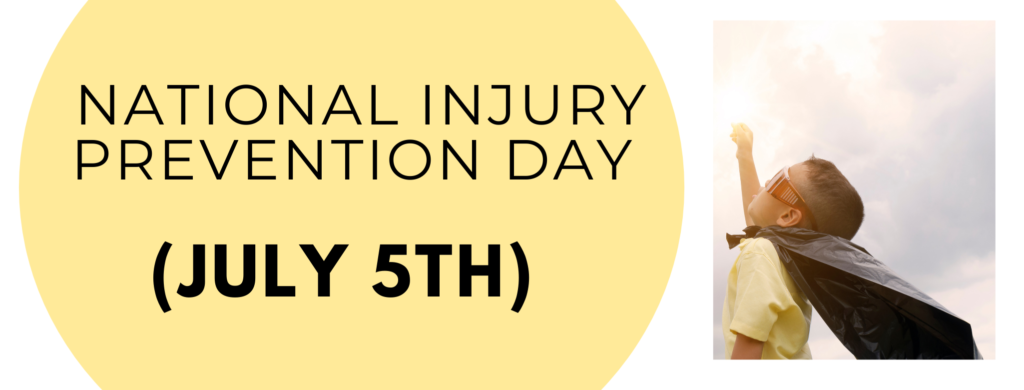
The goal of National Injury Prevention Day is to raise awareness on the prevention of serious injuries on the road, at home, and at play, and to provide the necessary information to reduce injury and disability while enjoying full and vibrant lives. (BC Injury Research and Prevention Unit).
According to Statistics Canada, injury is the leading cause of death for Canadians aged one to 44, ahead of cancer and heart disease. Injury is the third leading cause of death overall in Canada, after cancer and heart disease. And, according to The Trauma Association of Canada, “virtually all of these injuries and deaths, and the resulting costs, could have been prevented” (Trauma Association of Canada).
How do we help children take healthy risks, while also keeping them safe?
Safety Tips at Home
Closing the door: Closing the door after you should be your number one safety measure to introduce at home. This will not only ensure that intruders cannot access the house and also the younger kids cannot find their way out.
Secure furniture to prevent tip-overs: Purchase furniture that has a wider base, heavier back panel, and/or interlocking drawers to prevent furniture from tipping over. You can also learn to anchor your furniture, at Anchorit.gov.
No Playing or Going into the Road: There is always motorist in a rush and may not even consider that they are driving where children play.
Safe sleep: Suffocation, often in a sleep environment, is the leading cause of injury-related death for children under the age of 1. Remember: babies sleep best alone, on their backs, and in a crib / bassinet that meets safety standards.
Teaching Which Rooms are Off Limits: In the early years you can use things like baby gates, but beyond a few years it is important they know which rooms are off limits (such as laundry, pantry where chemicals are stored, or tool room).
Recalls: On average, one or more children’s products are recalled each week. Manufacturers often don’t do enough to make sure everyone who has the product learns of the recall. To keep up to date on recalls and incident reports, check your products at https://healthycanadians.gc.ca/recall-alert-rappel-avis/index-eng.php.
Helicopter vs Free Range Parenting
The term “helicopter parent” was first used in Dr. Haim Ginott’s 1969 book Parents & Teenagers by teens who said their parents would hover over them like a helicopter. It became popular enough to become a dictionary entry in 2011. Are you a helicopter parent? Take this Quiz! How did you rate? Check here for some great tips on how to balance helicopter and free range parenting techniques, or talk to the staff at Creating Together for some supportive suggestions.
